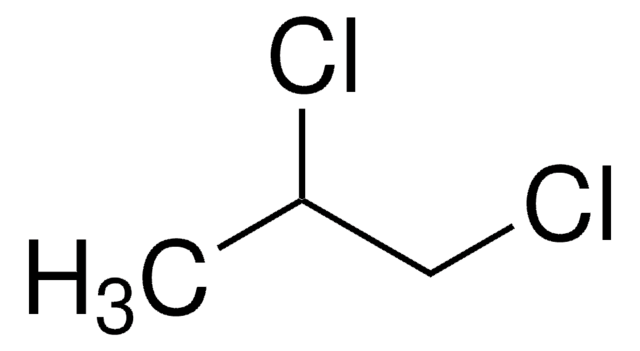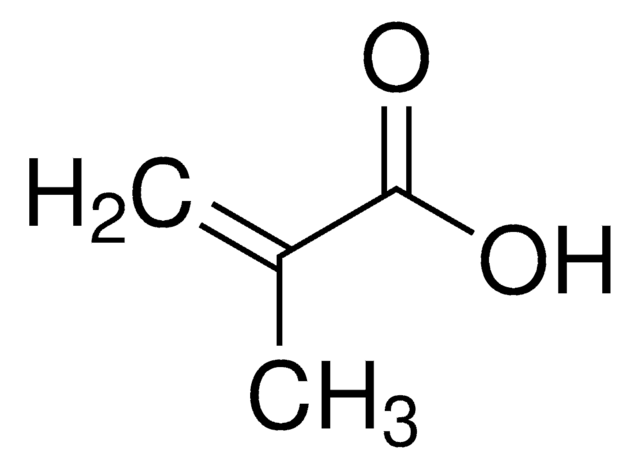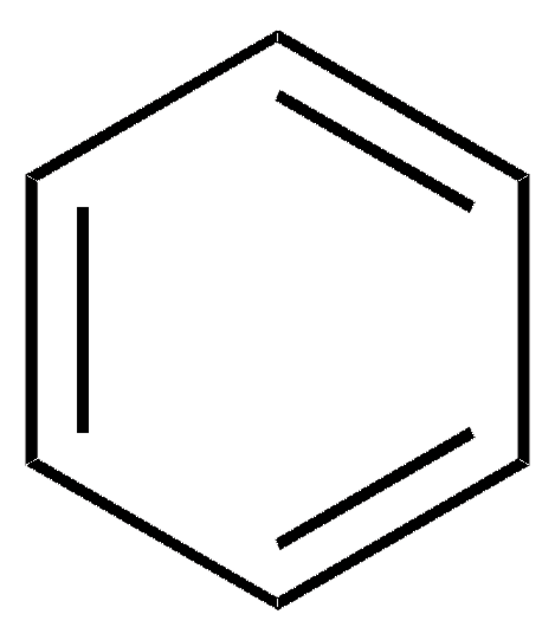82270
1,2-Dichloropropane
99%
Synonym(s):
Propylene dichloride
About This Item
Recommended Products
vapor density
3.89 (vs air)
Quality Level
vapor pressure
40 mmHg ( 19.4 °C)
Assay
99%
form
liquid
autoignition temp.
1035 °F
expl. lim.
14.5 %
refractive index
n20/D 1.439 (lit.)
n20/D 1.439
bp
95-96 °C (lit.)
mp
−100 °C (lit.)
density
1.156 g/mL at 25 °C (lit.)
functional group
chloro
SMILES string
CC(Cl)CCl
InChI
1S/C3H6Cl2/c1-3(5)2-4/h3H,2H2,1H3
InChI key
KNKRKFALVUDBJE-UHFFFAOYSA-N
Looking for similar products? Visit Product Comparison Guide
Related Categories
General description
Application
- 2-Ylidene-1,3-dithiolane derivatives via one-pot reaction with carbon disulfide and active methylene compounds in the presence of sodium ethylate.
- β-Chloropropylsulfurs by controllable dechloro-coupling reaction with thiols.
- Thiazolidine and 1,3-thiazinane derivatives via [3+2] and [3+3] annulation reaction with β-ketothioamides in the presence of phosphonium ylide as a catalyst.
Signal Word
Danger
Hazard Statements
Precautionary Statements
Hazard Classifications
Acute Tox. 3 Inhalation - Acute Tox. 4 Oral - Carc. 1B - Flam. Liq. 2
Storage Class Code
3 - Flammable liquids
WGK
WGK 3
Flash Point(F)
59.0 °F - closed cup
Flash Point(C)
15.0 °C - closed cup
Personal Protective Equipment
Choose from one of the most recent versions:
Already Own This Product?
Find documentation for the products that you have recently purchased in the Document Library.
Protocols
US EPA Method TO-17: GC Analysis of Volatiles on VOCOL® after Collection/Desorption using Air Toxics Tube
Our team of scientists has experience in all areas of research including Life Science, Material Science, Chemical Synthesis, Chromatography, Analytical and many others.
Contact Technical Service











